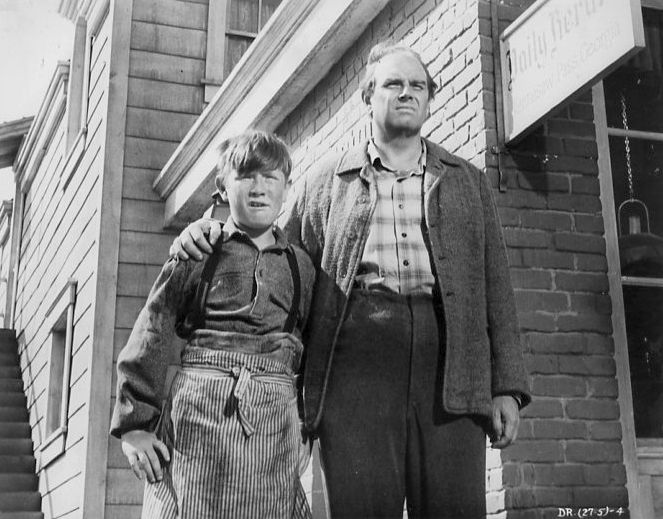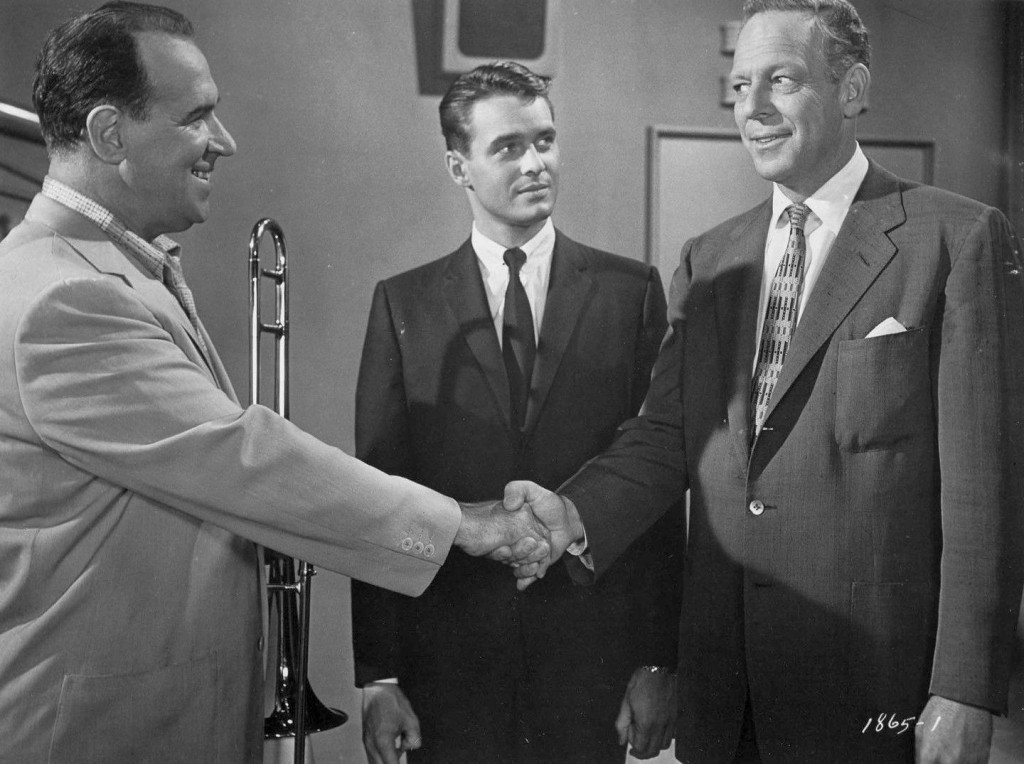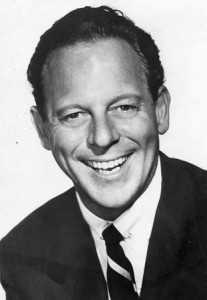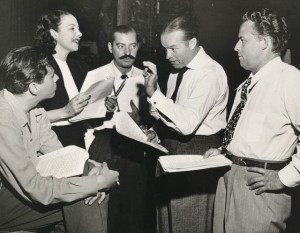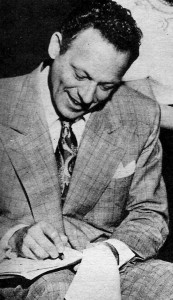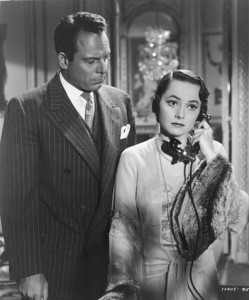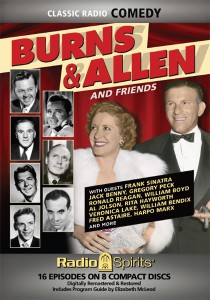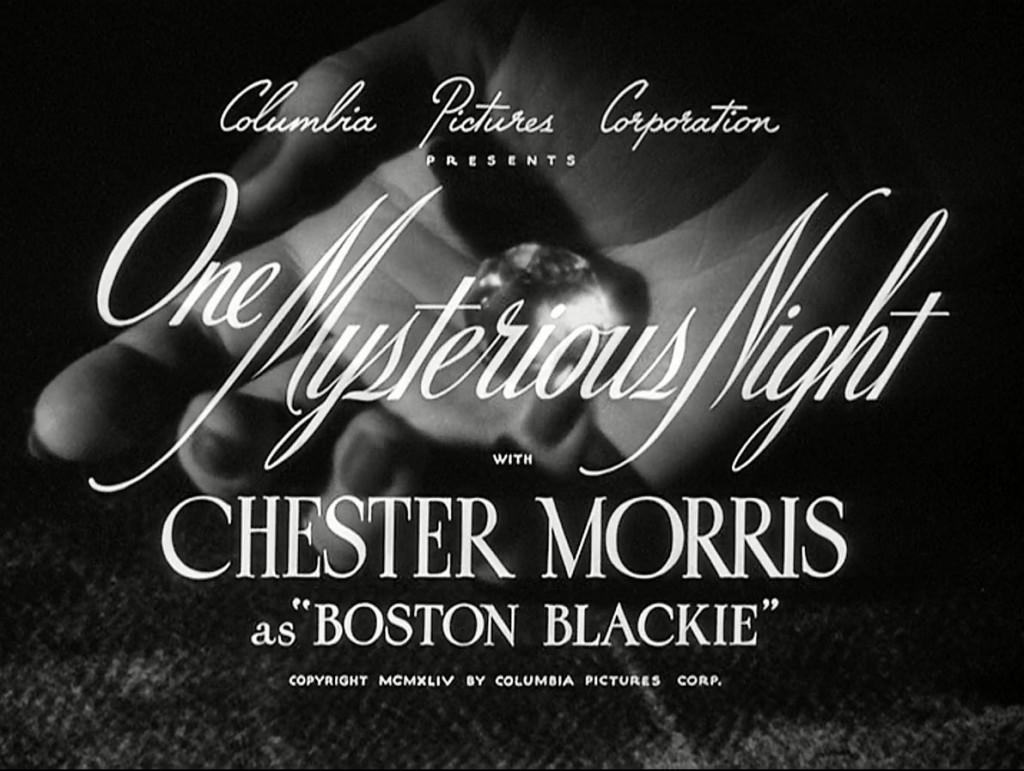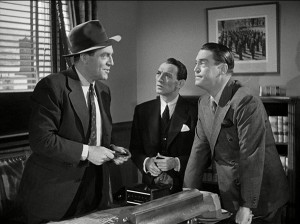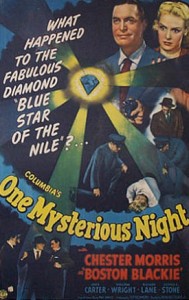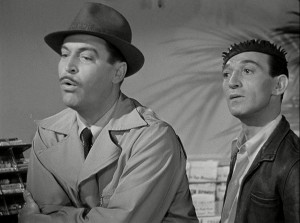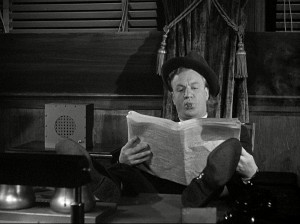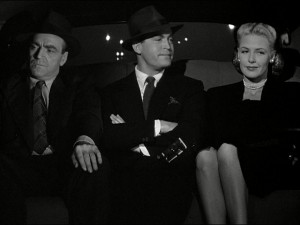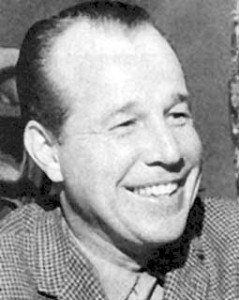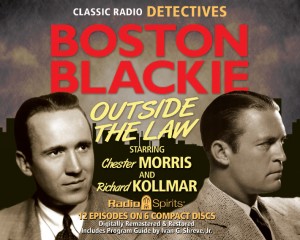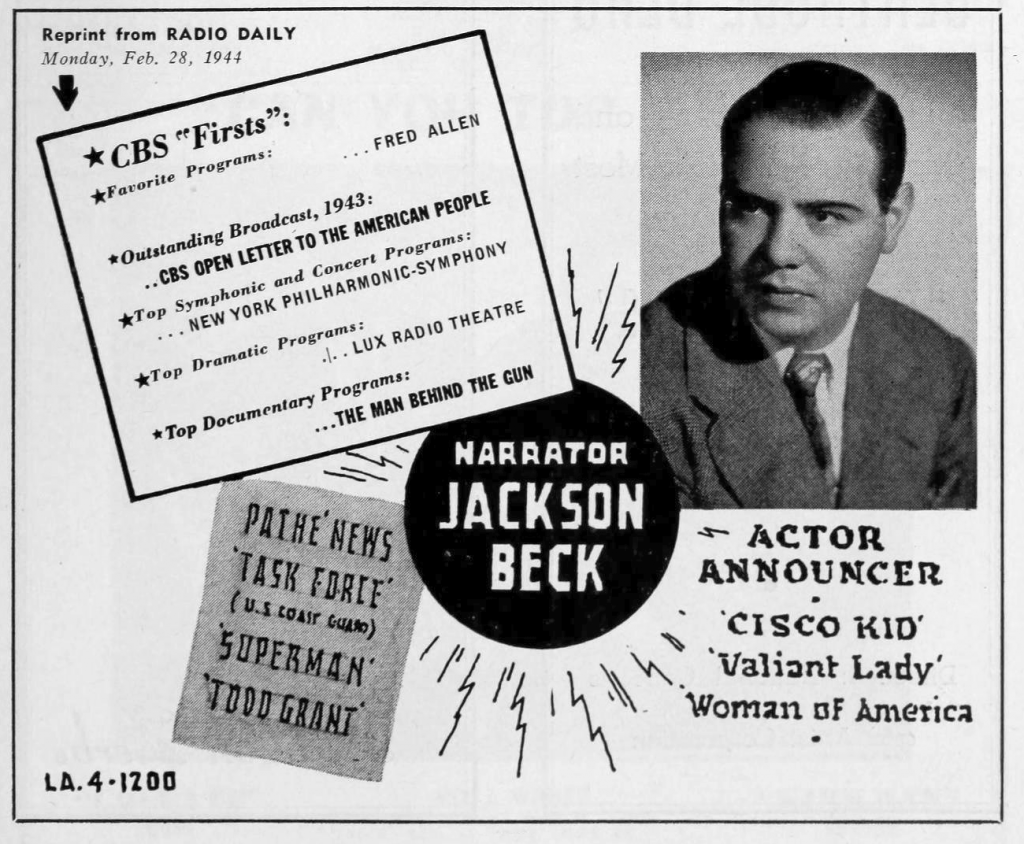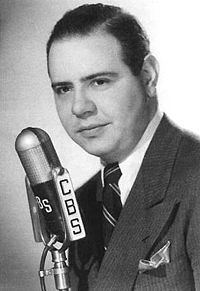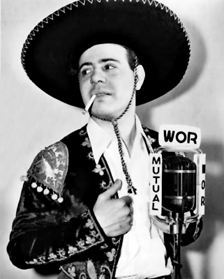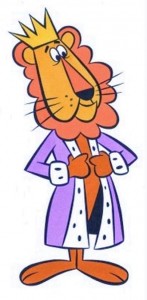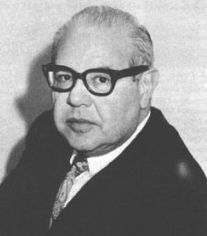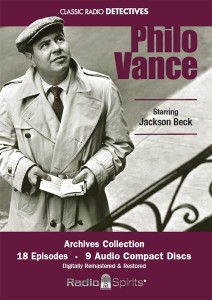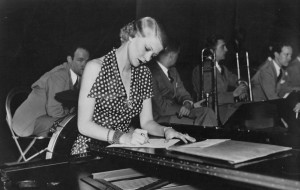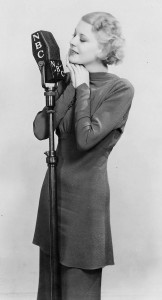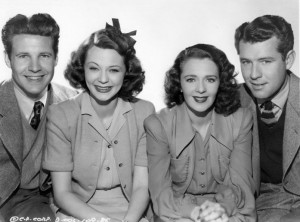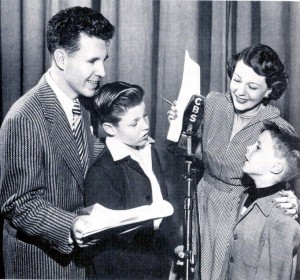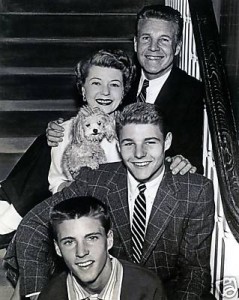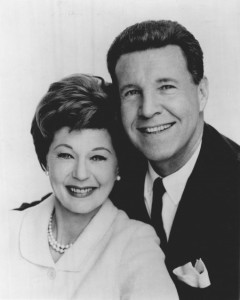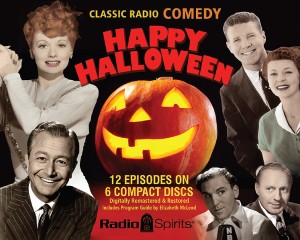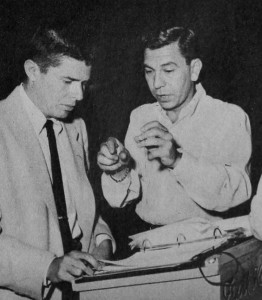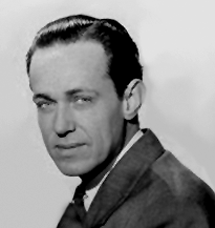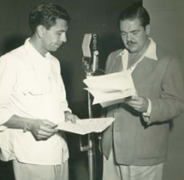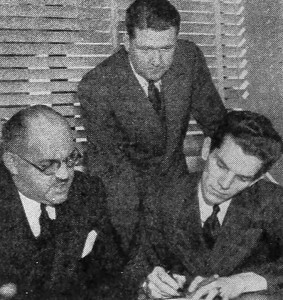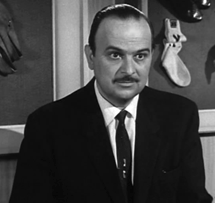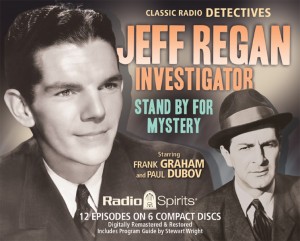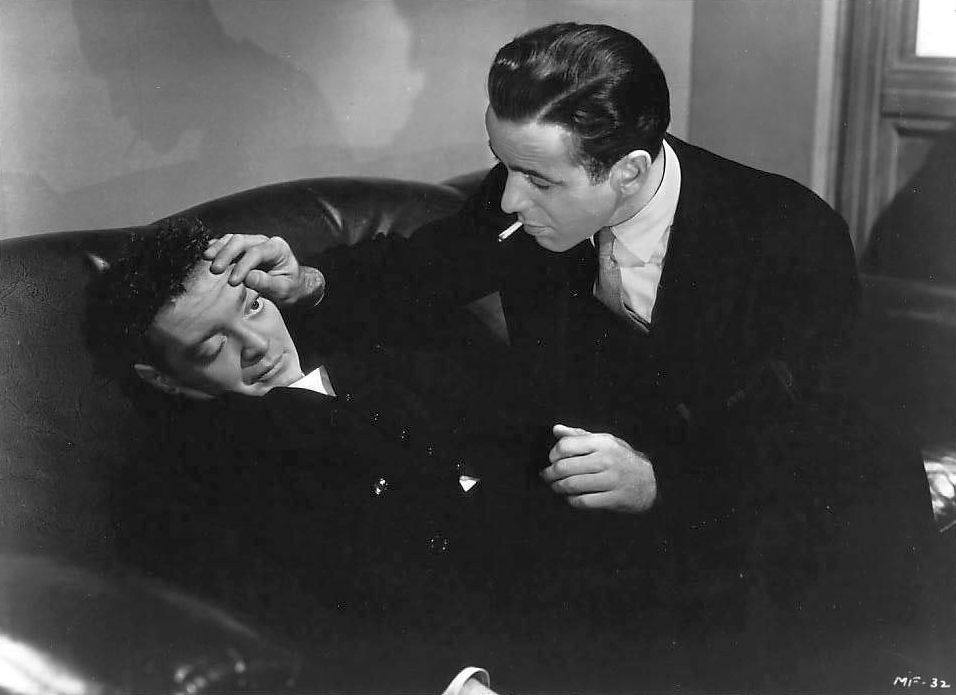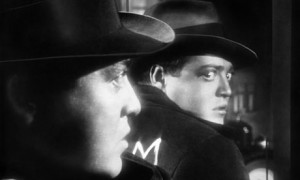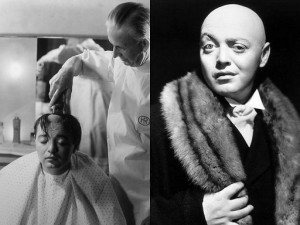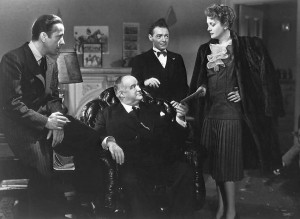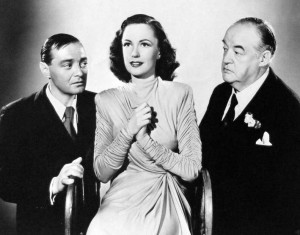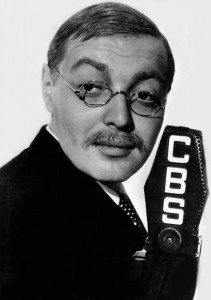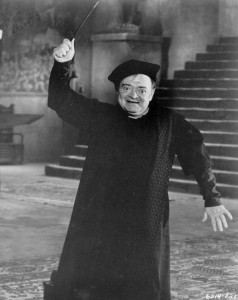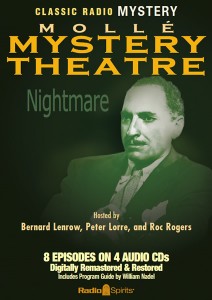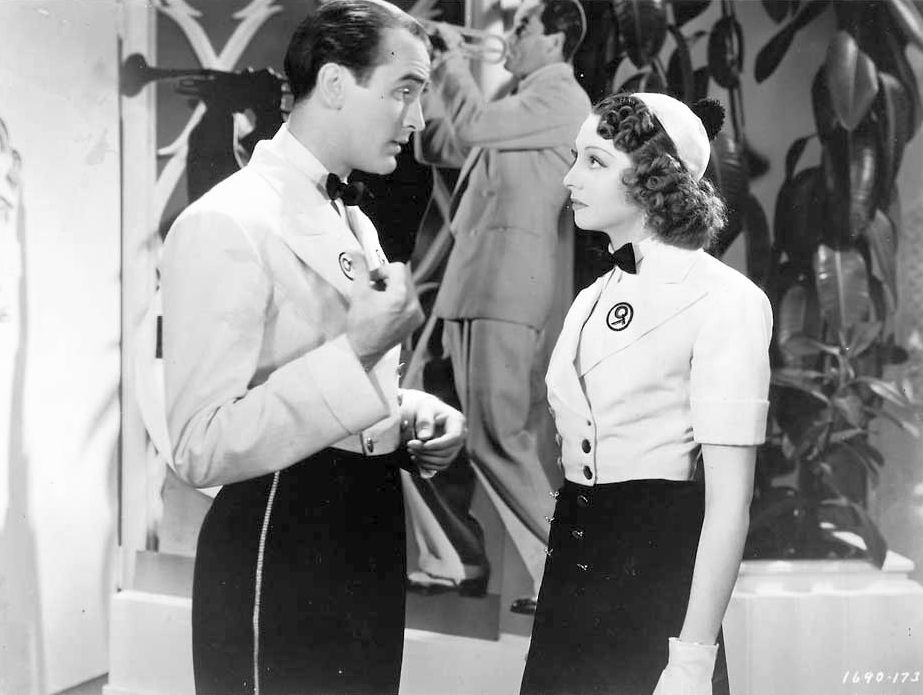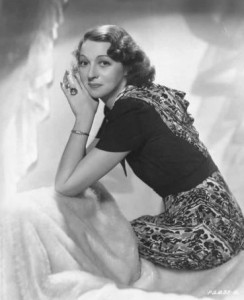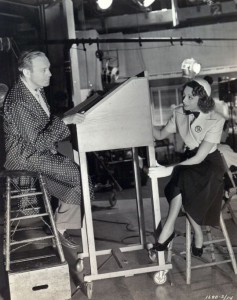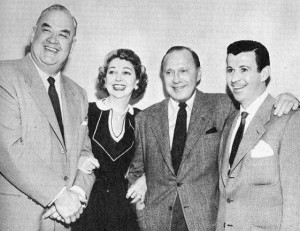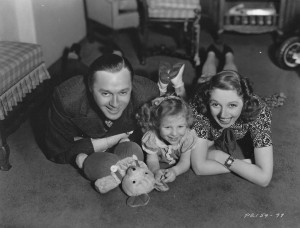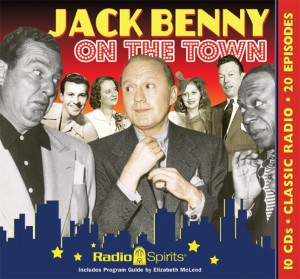Happy Centennial Birthday, Parley Baer!
Simply put, the actor born on this date one hundred years ago in Salt Lake City, Utah possessed one of the most distinctive voices in the multiple mediums of radio, TV and movies. Let me illustrate with a personal example. Many years ago, I was working on some project in the living room of my home in Savannah, GA and to have some noise on in the background, put on a DVD of the 1951 Cary Grant-Jeanne Crain movie People Will Talk. I was pretty engrossed in what I was doing, but the moment Grant’s character walked into a hobby store with the intention of buying a train set, I looked up upon hearing the voice of the salesman who spoke to him. “Parley Baer!” I shouted out…and then felt kind of silly, because I was the only person in the living room at the time.
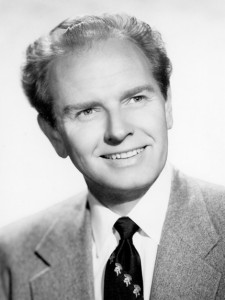 After studying drama at the University of Utah, Parley achieved the dream of every young boy: he ran away to join the circus. He was quite an adept ringmaster, employed at various times by Circus Vargas and Barnum & Bailey—and years after his radio and TV success, kept his hand in serving on the board of the community L.A. Circus. The big top is also where he met the future Mrs. Baer; Parley courted circus aerialist-bareback rider Ernestine Clarke, and married her in 1946—they were together for fifty-four years until her passing in 2000.
After studying drama at the University of Utah, Parley achieved the dream of every young boy: he ran away to join the circus. He was quite an adept ringmaster, employed at various times by Circus Vargas and Barnum & Bailey—and years after his radio and TV success, kept his hand in serving on the board of the community L.A. Circus. The big top is also where he met the future Mrs. Baer; Parley courted circus aerialist-bareback rider Ernestine Clarke, and married her in 1946—they were together for fifty-four years until her passing in 2000.
A stint as an announcer for Salt Lake’s KSLM got Baer interested in radio, and he began getting jobs on such series as The Whistler and The First Nighter Program. Parley would go on to appear on nearly every major dramatic anthology series, among them The Damon Runyon Theater, The Hallmark Hall of Fame, The Lux Radio Theatre, The NBC University Theater and The Railroad Hour. He was versatile enough to do comedy, scoring supporting roles on shows like Shorty Bell, Granby’s Green Acres (he was the original Eb!) and The Truitts, and guesting on the likes of Fibber McGee & Molly, Our Miss Brooks and Those Websters. It’s difficult to name a series that didn’t give Parley a script to hold at one time or another; he graced such popular programs as Barrie Craig, Confidential Investigator, Confession, The Count of Monte Cristo (as manservant Rene), Dragnet, The Man Called X, Night Beat, Pat Novak For Hire, Richard Diamond, Private Detective, The Six Shooter, Suspense, Tales of the Texas Rangers, This is Your FBI and Yours Truly, Johnny Dollar.
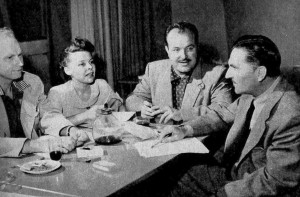 If Parley Baer had a mentor in radio…it might arguably be producer-director Norman Macdonnell. Norm used Parley frequently on The Adventures of Philip Marlowe, The CBS Radio Workshop, Escape, Fort Laramie and Romance. On Honest Harold, the sitcom Harold Peary did for CBS after departing The Great Gildersleeve, Baer played Harold’s pal Pete, and the actor later essayed the role of Doc Clemmens, the best friend (who often narrated the stories) of the titular hero on Rogers of the Gazette. Parley would also work for Macdonnell on what would later be acknowledged as his signature radio role as Chester Wesley Proudfoot in the dean of radio westerns, Gunsmoke.
If Parley Baer had a mentor in radio…it might arguably be producer-director Norman Macdonnell. Norm used Parley frequently on The Adventures of Philip Marlowe, The CBS Radio Workshop, Escape, Fort Laramie and Romance. On Honest Harold, the sitcom Harold Peary did for CBS after departing The Great Gildersleeve, Baer played Harold’s pal Pete, and the actor later essayed the role of Doc Clemmens, the best friend (who often narrated the stories) of the titular hero on Rogers of the Gazette. Parley would also work for Macdonnell on what would later be acknowledged as his signature radio role as Chester Wesley Proudfoot in the dean of radio westerns, Gunsmoke.
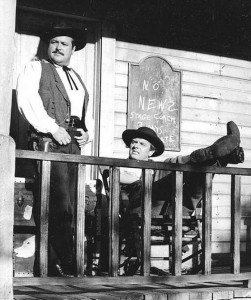 As originally written, Chester didn’t actually have a name—star William Conrad complained that Parley’s part in the audition script was simply designated as “Townsman,” and he explained it was silly to call him that when he had to address him. So Conrad came up with “Chester,” and Baer later ad-libbed the remainder of his moniker in another episode. In numerous interviews, the actor unhesitatingly described playing Chester on Gunsmoke as the highlight of his professional career—a complete contrast to Dennis Weaver, who played the “dependable non-thinker” (Baer’s description) on television, and who eventually became dissatisfied with what he considered a limiting, confining trap. Like so many radio veterans, Parley Baer embraced acting in the medium as a pure joy—he continued to perform on such 1970s revivals as The Sears Radio Theater (a.k.a. The Mutual Radio Theater) and played the recurring roles of Reginald Duffield and Uncle Joe Finneman on Adventures in Odyssey in the 1980s/1990s.
As originally written, Chester didn’t actually have a name—star William Conrad complained that Parley’s part in the audition script was simply designated as “Townsman,” and he explained it was silly to call him that when he had to address him. So Conrad came up with “Chester,” and Baer later ad-libbed the remainder of his moniker in another episode. In numerous interviews, the actor unhesitatingly described playing Chester on Gunsmoke as the highlight of his professional career—a complete contrast to Dennis Weaver, who played the “dependable non-thinker” (Baer’s description) on television, and who eventually became dissatisfied with what he considered a limiting, confining trap. Like so many radio veterans, Parley Baer embraced acting in the medium as a pure joy—he continued to perform on such 1970s revivals as The Sears Radio Theater (a.k.a. The Mutual Radio Theater) and played the recurring roles of Reginald Duffield and Uncle Joe Finneman on Adventures in Odyssey in the 1980s/1990s.
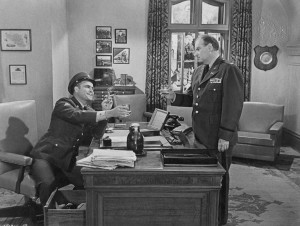 By the beginning of the 1950s, Parley was ready to flex his thespic muscles as a movie character actor; his first credited roles were in the films Comanche Territory and Union Station, and he later appeared in the likes of Air Cadet (1951), Away All Boats (1956), The Young Lions (1958), The FBI Story (1959), Wake Me When It’s Over (1960), A Fever in the Blood (1961), Gypsy (1962), Bedtime Story (1964), Those Calloways (1965), Skin Game (1971)…and one of his personal favorites, the controversial Sam Fuller-directed White Dog (1982). He’d continue to play small roles and bit parts in films until 1995; one of his most memorable valedictory roles was as the Senate majority leader in the 1993 comedy Dave.
By the beginning of the 1950s, Parley was ready to flex his thespic muscles as a movie character actor; his first credited roles were in the films Comanche Territory and Union Station, and he later appeared in the likes of Air Cadet (1951), Away All Boats (1956), The Young Lions (1958), The FBI Story (1959), Wake Me When It’s Over (1960), A Fever in the Blood (1961), Gypsy (1962), Bedtime Story (1964), Those Calloways (1965), Skin Game (1971)…and one of his personal favorites, the controversial Sam Fuller-directed White Dog (1982). He’d continue to play small roles and bit parts in films until 1995; one of his most memorable valedictory roles was as the Senate majority leader in the 1993 comedy Dave.
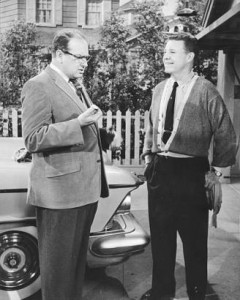 Parley would become a frequent presence on the small screen as well, guest starring on such TV successes as Have Gun – Will Travel, Perry Mason, The Lucy Show, Hogan’s Heroes, Petticoat Junction, Green Acres, The Virginian, Bewitched, WKRP in Cincinnati and Newhart. On The Andy Griffith Show, Parley played Mayberry mayor Roy Stoner (reuniting him with his one-time Gunsmoke colleague Howard McNear), a by-the-book stickler for the rules who frequently created conflict for Sheriff Andy Taylor. Baer also appeared on The Addams Family in several episodes (as city commissioner—and later mayor—Arthur J. Henson) and had a recurring role on The Dukes of Hazzard as Doc Appleby. His best remembered boob tube gig is undoubtedly that of Ozzie and Harriet’s neighbor Herb Darby on The Adventures of Ozzie & Harriet; later, in the 1990s, he made multiple appearances on the daytime drama The Young and the Restless as Miles Dugan when that series prominently featured a story arc on senior citizens. Even when Parley wasn’t appearing on a proper TV program chances were you could catch him voicing the Keebler Elf in that cookie company’s popular commercials.
Parley would become a frequent presence on the small screen as well, guest starring on such TV successes as Have Gun – Will Travel, Perry Mason, The Lucy Show, Hogan’s Heroes, Petticoat Junction, Green Acres, The Virginian, Bewitched, WKRP in Cincinnati and Newhart. On The Andy Griffith Show, Parley played Mayberry mayor Roy Stoner (reuniting him with his one-time Gunsmoke colleague Howard McNear), a by-the-book stickler for the rules who frequently created conflict for Sheriff Andy Taylor. Baer also appeared on The Addams Family in several episodes (as city commissioner—and later mayor—Arthur J. Henson) and had a recurring role on The Dukes of Hazzard as Doc Appleby. His best remembered boob tube gig is undoubtedly that of Ozzie and Harriet’s neighbor Herb Darby on The Adventures of Ozzie & Harriet; later, in the 1990s, he made multiple appearances on the daytime drama The Young and the Restless as Miles Dugan when that series prominently featured a story arc on senior citizens. Even when Parley wasn’t appearing on a proper TV program chances were you could catch him voicing the Keebler Elf in that cookie company’s popular commercials.
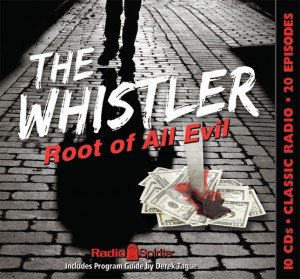 A major stroke in 1997 ended Parley’s acting career, and he finally shuffled off this mortal coil in 2002 at the age of 88. But his radio legacy is a rich one; among the Radio Spirits collections on which you can hear the amazing Mr. Baer: The Adventures of Philip Marlowe, Defense Attorney, Escape (Escape to the High Seas), Fort Laramie Volume Two, Frontier Gentleman (Aces and Eights), The Line Up (Witness), The Mutual Radio Theater, Night Beat (Lost Souls), Our Miss Brooks (Boynton Blues), Pat Novak for Hire (Pain Gets Expensive), Richard Diamond, Private Detective (Mayhem is My Business), Romance, The Six Shooter (Gray Steel), Suspense (Tales Well Calculated) and The Whistler (Notes on Murder, Root of All Evil). Today’s birthday boy also appears on all of our Yours Truly, Johnny Dollar sets: Confidential, Murder Matters, Phantom Chases, Wayward Matters…and The Many Voices of Johnny Dollar. Happy centennial anniversary to one of our favorite character actors!
A major stroke in 1997 ended Parley’s acting career, and he finally shuffled off this mortal coil in 2002 at the age of 88. But his radio legacy is a rich one; among the Radio Spirits collections on which you can hear the amazing Mr. Baer: The Adventures of Philip Marlowe, Defense Attorney, Escape (Escape to the High Seas), Fort Laramie Volume Two, Frontier Gentleman (Aces and Eights), The Line Up (Witness), The Mutual Radio Theater, Night Beat (Lost Souls), Our Miss Brooks (Boynton Blues), Pat Novak for Hire (Pain Gets Expensive), Richard Diamond, Private Detective (Mayhem is My Business), Romance, The Six Shooter (Gray Steel), Suspense (Tales Well Calculated) and The Whistler (Notes on Murder, Root of All Evil). Today’s birthday boy also appears on all of our Yours Truly, Johnny Dollar sets: Confidential, Murder Matters, Phantom Chases, Wayward Matters…and The Many Voices of Johnny Dollar. Happy centennial anniversary to one of our favorite character actors!

